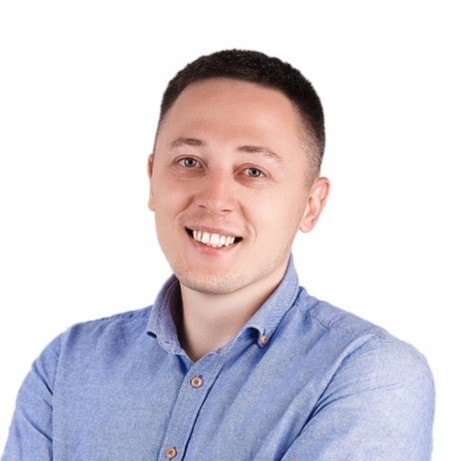Mental health has become a critical issue, with more people experiencing stress, anxiety, and depression than ever before. The rising cost of living, the necessity to work long hours, and the impact of social media have exacerbated this situation, increasing the demand for mental health services. However, a severe shortage of professionals and resources makes it difficult for many to get the help they need.
Mental health telehealth offers a practical solution to this problem. These apps provide flexible and accessible mental health support, including therapy sessions, crisis intervention, medication management, virtual support groups, and continuous monitoring. They help bridge the gap between mental health services and the demand, offering effective care while maintaining patient privacy and data security.
Explore more about using telemedicine for mental health, the challenges of its implementation, and the use cases below.
Why is Mental Health a Pressing Issue, and Will Things Keep Escalating?
Growing demand for mental health services and an inadequate number of providers to meet that need have only gotten worse since 2020. According to new FAIR Health data, mental health conditions ranked No. 1 on the list of top telehealth diagnoses nationally and in every United States region in January 2024.
1 in 5 Americans were already living with a mental illness before COVID-19. By 2023, the adult depression rates had hit an all-time high, and there were more suicides on record in 2022 than any other year. The number of children’s mental health conditions for which patients come to emergency departments is also growing.
Making matters worse, almost half of the American population resides in a place where mental health professionals are already in limited numbers. In 2024, the US will lack between 14,280 and 31,109 psychiatrists, psychologists, and social workers — proving exactly how important it is to start working on solutions for this issue today.
In the UK and other Western countries, the situation is also alarming:
- Over 1 in 7 UK adults report their mental health as bad or the worst it has ever been.
- Young people aged 16-24 are the hardest hit, with nearly 24% describing their mental health as bad or the worst it has ever been.
- In 2023, NHS England spent £217.5 million on medications for depression and anxiety.
The mental health costs are skyrocketing, not only for patients and national healthcare systems. Employers also feel this burden. A depressed employee may result in $9,450 annual losses due to absenteeism and lost productivity. Poor mental health also affects turnover costs, as employees who do not get regular mental health support from their employers are 5.5X more likely to think about leaving their jobs.
Considering all this data, it’s unsurprising that the mental health market volume will reach $39.46 billion by 2028.
Now that you understand the current mental health landscape, let’s explore how telehealth apps may be useful.
8 Ways Mental Health Telehealth Makes Up For the Mental Health Services Demand
While mental health telehealth can only partially substitute the need for offline visits, its benefits are significant. By offering flexible and accessible mental health services, telemedicine has the potential to bridge the gap between the high demand for mental health services and the inadequate number of providers available.
Remote Therapy Sessions
Telehealth and mental health solutions enable professionals to conduct therapy sessions remotely. Such flexibility benefits individuals in rural areas, where 60% of residents suffer from mental health provider shortages or those with mobility issues, ensuring access to mental health care. Videoconferencing platforms can be used for individual, group, or family therapy sessions, removing barriers such as distance and transportation issues.
One such app example is Talkspace, a premier app for remote therapy sessions. It utilizes video, audio, and text messaging to make therapy more accessible and convenient. Its personalized matching system connects users with licensed therapists tailored to their specific needs and preferences. Moreover, Talkspace provides a secure digital platform where users can track their progress, set personal goals, and access a wealth of therapeutic resources, including worksheets and guided exercises.
Crisis Intervention & Suicide Prevention
Telehealth and mental health platforms are powerful tools for crisis intervention and suicide prevention. They enable mental health professionals to support individuals in crisis through real-time video or audio consultations. This capability ensures timely interventions, thorough risk assessments, and referrals to appropriate resources, which can be lifesaving during critical moments.
In particular, the studies have found that telepsychiatry interventions:
- Allow professionals to manage other psychiatric disorders that most people who make suicidal attempters also have
- Increase help-seeking thanks to anonymity and confidentiality
- Have lower costs
- Reduce suicidal risk with acceptable efficacy
Remote Medication Management
The benefits of telehealth for mental health also include remote medication management. Psychiatrists can conduct virtual appointments to assess medication efficacy, adjust dosages, monitor side effects, and provide continuous medication management. This can help improve medication adherence and treatment outcomes.
Additionally, electronic prescriptions in telehealth apps make it easier and faster for patients to receive their medications, further enhancing the convenience and effectiveness of remote care.
For example, MediSafe provides personalized health insights based on medication adherence and allows secure sharing of medication schedules with family members and healthcare providers, ensuring comprehensive support. This blend of real-time alerts, seamless integration, and personalized insights makes MediSafe a standout tool for managing medication effectively.
Virtual Support Groups
Online platforms can serve as virtual support groups for individuals with similar mental health concerns. These groups provide an environment where people can bond, learn coping strategies, and receive professional help. Virtual support groups are especially helpful for individuals with limited access to in-person support services. They also ensure anonymity, which most people with mental health issues value above all.
7 Cups is an innovative app that provides virtual support groups and connects users with trained listeners for emotional support and community engagement. Its standout features include anonymous and confidential conversations, an extensive library of self-help guides, and a personalized growth path featuring activities and milestones. Additionally, the app offers specialized support communities addressing various issues, including anxiety, depression, and relationship challenges, ensuring tailored support for diverse needs.
Telemonitoring for Mental Health Conditions
Telemonitoring helps track progress, identify possible challenges, and provide timely interventions to people with mental health conditions. Through telehealth technology, mental health professionals can remotely monitor symptoms, medication adherence, and vital signs. They can proactively spot when patients need extra care and manage chronic conditions more efficiently.
For example, the Veterans Health Administration uses telemonitoring for veterans with PTSD and depression, significantly reducing hospitalizations and emergency visits. Wearable devices monitor heart rate variability and sleep patterns in bipolar disorder patients, alerting healthcare providers to early signs of manic or depressive episodes. Mobile apps for schizophrenia patients record daily symptoms and medication intake, notifying providers of potential relapses.
Multi-Disciplinary Consultations
Telehealth facilitates telemental health consultations between mental health professionals, allowing collaboration, supervision, and second opinions. This approach ensures comprehensive patient care by bringing together diverse expertise, especially valuable in underserved areas with limited access to specialized mental health services.
For example, a rural clinic without an on-site psychiatrist can arrange a telehealth consultation with a psychiatrist in a different city. The local healthcare provider and the remote psychiatrist can discuss the patient’s symptoms, treatment history, and potential medication adjustments in real-time. Similarly, a psychologist might seek a second opinion from a specialized colleague in another region regarding a complex co-occurring disorder case. This collaborative approach enhances the quality of care and provides opportunities for professional development and supervision.
Psychoeducation
Psychoeducation through telehealth is an effective way to provide patients and their families with essential information about mental health conditions, treatment options, and coping strategies. By leveraging telehealth platforms, mental health professionals can deliver educational content through webinars, workshops, and digital resources. As a result, patients will better understand their conditions and know how to manage them or when to contact a professional.
Additionally, telehealth enables the dissemination of psychoeducational materials to a broader audience, ensuring that more individuals can access valuable mental health information regardless of where they live. This can improve treatment adherence and reduce stigma related to psychotherapy.
mHealth Chatbots
The digital mental health care industry has recently begun incorporating AI into existing platforms, creating various AI-guided products, including chatbots for communication. These artificially intelligent chatbots or conversational agents allow users to receive support, guidance, pre-diagnostics, and other services instantly.
Such solutions are particularly valuable for providing 24/7 support and managing work overload. When a mental health professional may not be immediately available, patients can obtain information and assistance from a chatbot, helping to bridge the gap in mental health services demand. This technology enhances accessibility and ensures continuous patient support, improving overall mental health outcomes.
Challenges of Telehealth and Mental Health Implementation
While telehealth has significant potential to address gaps in mental health services, its implementation comes with challenges we often encounter working with telehealth software. Let’s explore some of the most common.
Privacy
Privacy concerns are paramount in telehealth. Ensuring that all communications remain confidential and secure is essential to maintaining patient trust and compliance with regulations such as HIPAA. Companies must invest in robust security measures and educate providers and patients about best practices to protect personal health information.
Regulatory Compliance
Navigating the complex regulatory compliance landscape can be daunting for companies developing telehealth solutions. Different states and countries have varying requirements, making it crucial to stay informed and compliant to avoid legal issues.
In the US, the Ryan Haight Online Pharmacy Consumer Protection Act regulates the prescription of controlled substances via telehealth. The Health Insurance Portability and Accountability Act (HIPAA) protects patient privacy and data security. Additionally, the Centers for Medicare & Medicaid Services (CMS) have specific reimbursement policies for telehealth services you must adhere to.
Client Engagement
Distractions at home and the ease of canceling appointments can impact the effectiveness of telehealth services. Developing strategies to enhance engagement, such as setting clear expectations regarding participation and commitment and creating a structured session environment, is vital for successful telehealth implementation.
Adapting Services to Telehealth
Adapting traditional mental health services to a telehealth format requires careful planning. Providers must modify their approaches to suit virtual platforms while ensuring the quality of care remains high. This includes developing new protocols for telehealth sessions, training staff on digital tools, and continuously evaluating and improving telehealth practices.
Negative Impact on Providers
Providers may experience “zoom fatigue” and exhaustion from conducting back-to-back virtual sessions daily. This can lead to burnout and reduced effectiveness, highlighting the need for strategies to support provider well-being. Organizations should encourage breaks, provide resources for mental health support, and consider workload management to prevent burnout.
Technological Barriers
While telehealth expands access to care, technological barriers can hinder its effectiveness. Poor internet connectivity, lack of access to devices, and low digital literacy can prevent some patients from benefiting fully from telehealth services. Therefore, it is crucial to create user-friendly solutions focusing on accessibility. Our UI/UX services address these challenges, providing intuitive and accessible interfaces that ensure all patients can fully benefit from telehealth services.
Missing Therapeutic Alliance
Internet-based therapy impacts the therapeutic alliance, making deep connections difficult. Recent evidence shows these concerns persist. Carl Rogers, one of the founders of humanistic psychology, emphasized that therapists must be nonjudgmental, warm, respectful, and genuinely caring. These essential qualities are hard to convey through emails or texts. Additionally, online therapy’s lack of nonverbal cues increases the risk of miscommunication.
Blurred Boundaries
Under normal circumstances, clients and psychologists maintain clear boundaries regarding contact times and modes of contact. Online communications often make clients believe their psychologist is available 24/7 and struggle to keep session times within 50–60 minutes. As a result, the boundaries get blurred, which harms the efficiency of psychotherapy and makes clients overly dependent on mental health specialists.
Competencies
Despite the broad availability of technology, many psychologists do not have the essential skills to practice telepsychology effectively and safely. Therefore, they must acquire the technical knowledge and expertise before engaging in telehealth services.
Additionally, verifying a professional’s competency can be more difficult with remote services, making it essential to ensure that practitioners have the appropriate training and credentials.
Partnering with an engineering company experienced in healthcare solutions like Empeek will allow you to overcome most of these challenges. We can help you build mental health solutions that ensure high PHI security, meet regulations, keep users engaged, simplify app use through professional UI/UX, and more.
Examples of Mental Health Telehealth Applications
Our team has extensive experience developing and implementing telehealth solutions for mental health care. We have developed various innovative projects that have successfully addressed the unique challenges of providing remote mental health services. Here are some of them.
VelloHealth Digital Mental Health Solution
We partnered with Vello Health to develop a HIPAA-compliant digital platform for ACT teams to replace inefficient paper and spreadsheet workflows. Our solution included a backend admin system, web application, and mobile app, improving safety, compliance, and EMR integration. Key features like HIPAA-compliant messaging and offline geocoding ensured data privacy and efficiency. This resulted in a 62% increase in completed visits, a 109% growth in average billings, and better patient data management, helping Vello Health expand its customer base and streamline operations.
Moodlifters Mental Health EMR/EHR Software

Another project we have contributed to is a comprehensive EHR system and mobile apps for Moodlifters, a program that helps reduce stress and anxiety and promote mental well-being. Our solution included web, server, Android, and iOS applications that allow users to complete surveys, set appointments, track achievements, and receive rewards. This system improved operational efficiency by automating manual tasks, providing instant treatment questionnaire analysis, and ensuring secure data management. As a result, Northern Michigan CHIR now manages patient data more effectively, saving costs and enhancing patient care.
Empeek for Telehealth and Mental Health Software Development
Empeek builds HIPAA-compliant mental health and telehealth applications tailored to improve patient care and optimize the role of digital technology in healthcare. With an agile development approach, we ensure a quick time to market and continuous improvement based on user feedback.
Our team includes over 100 engineers, and a dedicated project manager supports each project. This ensures we deliver high-quality, efficient solutions tailored to our clients’ needs.
Conclusion
Telehealth use for mental health management is a new, powerful trend as more people suffer from depression, social anxiety, and other issues. Since mental health problems are still stigmatized, online therapy and treatment management can become a way out for many people who cannot have offline therapy sessions. Besides, mental health solutions make care more affordable thanks to automation and other innovative features like chatbots.
So whether you want to invest in telehealth or seek ways to improve access to mental health services, the integration of telehealth and mental health is an excellent option. Its popularity and demand will only keep growing.








